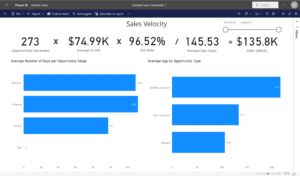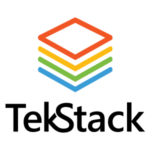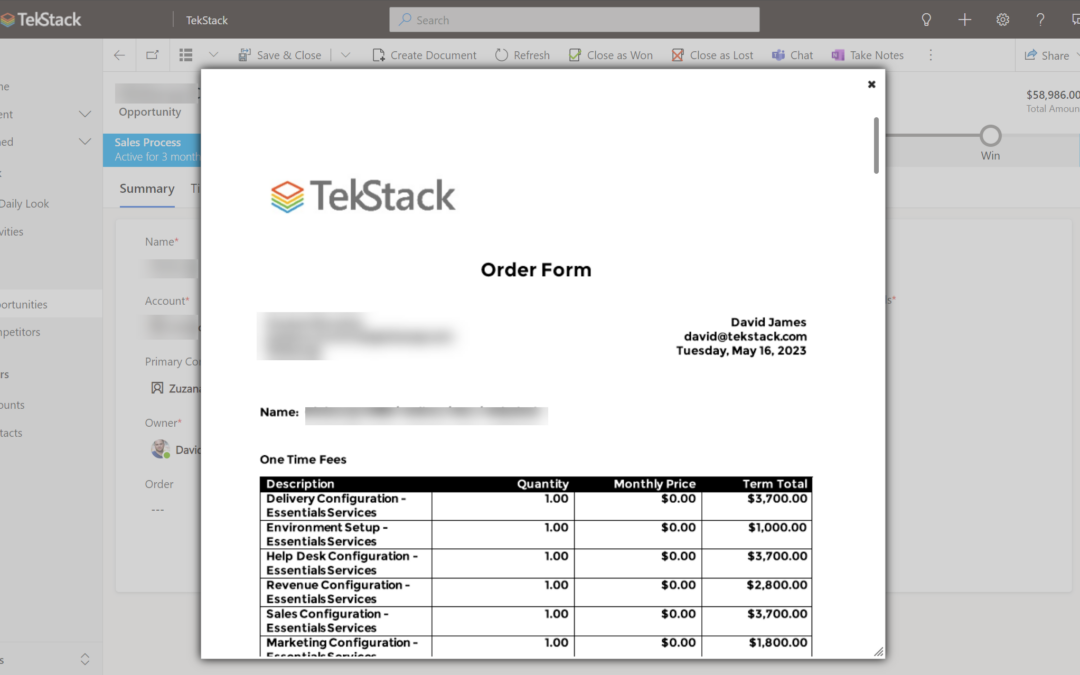
The first step to good revenue operations is CPQ, or more specifically, incorporating the use of products and product pricing into the opportunity process. These tools are important to speed up the quoting process as well as improve pricing compliance and accuracy. They are also the first very important step in automating revenue operations, especially with invoicing subscription renewals.
However, for most growing or mid-size B2B SaaS companies, sales teams forgo the use of a CPQ. Why? Three main reasons:
- Lack of a published pricing model. Some SaaS companies have a fluid pricing model that is more guidance than rule.
- CPQ Tool Complexity. These tools are too difficult to implement and can be even harder to use because they don’t provide flexibility sellers need.
- CPQ Tool Cost. Some of these tools can cost as much as the CRM its bolted to.
Using products to establish good revenue operations
TekStack makes it easy for B2B SaaS companies to achieve good revenue operations through CPQ. The first step is building a product list with the pricing info needed by B2B SaaS companies. Most CRMs tools provide this capability, but what is usually lacking is the ability to deal with the types of products that B2B SaaS companies sell; subscription based, and service based products.
TekStack makes this important step so much easier by allowing you to define a product as:
- One-time fee (ex. Hardware) even including maintenance line items on the hardware.
- Subscription product (ex. SaaS Software) where you can define term length, and what triggers the subscription start.
- Services (ex. Hourly rates, onboarding packages).
Products can even be used in bundles and can incorporate unit costs so that gross margins can be calculated.
TekStack makes it easy for sellers to create quotes
Once products are created and associated to price lists, sellers can use those products to build opportunities. TekStack automatically separates key opportunity money fields like Total Amount, Recurring Amount, One-Time Amount. These distinctions are critical to understanding the opportunity value, but also important to building the quote document. Most CRMs lump all product values into one field like ‘Est. Revenue’. This is not terribly helpful when trying to answer the questions like:
- How much ARR is this opportunity?
- How many years is the term?
- How many dollars associated to services revenue?
Once the opportunity is loaded with products, users can create quote documents with the push of a button. Documents can be long form proposals with lots of narrative text, or something more like an order form with signature block that can be used with e-signing tools. Sellers can output to PDF, Word, send the quote directly from TekStack, as well as save to the appropriate folder. Creating the document templates is made easy with TekStack’s MS Word integration.
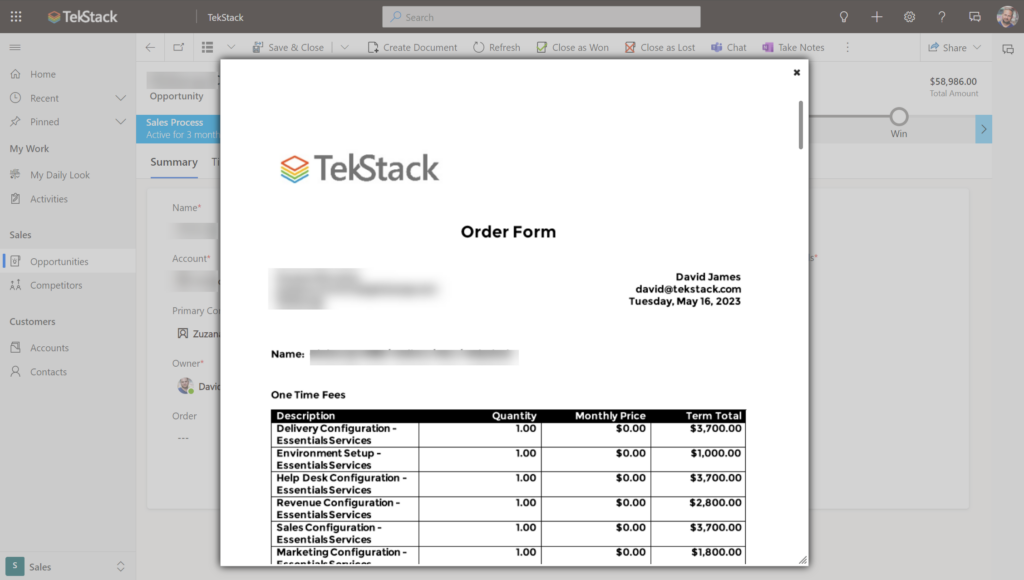
TekStack gives sellers an ability to create quote, order, or proposal documents with one click.
The big difference with TekStack is when an Opportunity turns into an Order
This is where TekStack really separates itself from the countless tools out there. When a customer is ready to move forward, and the seller closes the opportunity as won, the deal desk (accounting or the sales manager) reviews the opportunity before generating an order. When an order is generated in TekStack, a few key things happen:
- Subscriptions are created. A new subscription is created for every product on the Order. This subscription will have a start and end date but will also create deferred revenue entries, and a subscription history.
- Invoice is created. An invoice is created based on the invoice settings specified by the seller on the opportunity. Monthly, Annually, or In Advance (in the case of multi-year deals). Services products can be invoiced in advance, or on time entry, or release of project milestones.
Most CRM tools lack the ability to track subscription revenue, or even generate an accurate invoice that could be sent to the customer. Usually subscription revenue is tracked in a spreadsheet and the invoice needs to be rekeyed by the finance team.
Other things B2B SaaS companies really need to achieve Revenue Operations
With the establishment of products on Opportunities, a whole world opens up for B2B SaaS companies. TekStack will mature your revenue operations with important functions such as:
Co-Terminating Orders
For existing customers, when they buy more of an existing product, or new products, TekStack will ‘co-term’ the new order so that the renewal date optionally matches the existing renewal date. This prevents one customer from receiving multiple renewal invoices in a year, if they don’t want that.
Renewal Management
Tied to this, TekStack manages renewals. A new opportunity will be created ‘x’ days in advance of a customers renewal date. This makes it easy to track when renewals are coming do, and gives sellers ample time to check in with a customer before sending the renewal invoice, in case there is an opportunity to upsell, or stave off any attrition risk.
Visualizing and Understanding ARR
Because TekStack properly calculates subscription recurring revenue, and because we calculate revenue deferral, TekStack is able to provide all the important metrics related to ARR run rate, growth, as well as key metrics like Gross Retention and Net Retention.
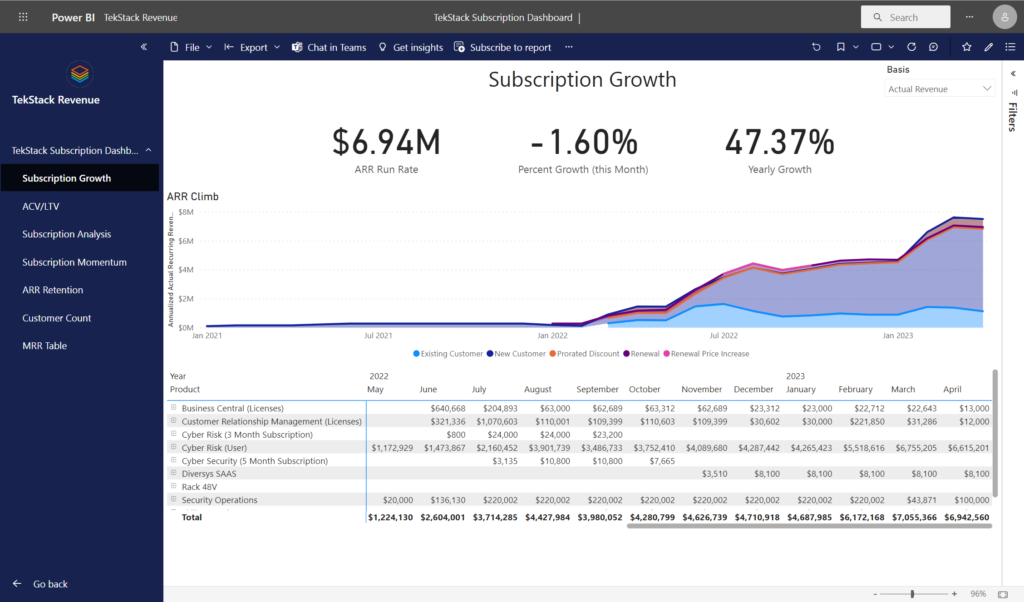
TekStack offers Power BI reports to analyze subscription revenue
Conclusion
B2B SaaS companies have difficulty implementing CPQ because most CRM systems lack the features to make it work. However, CPQ is the first step of mature revenue operations, renewal management, and capturing vital metrics. TekStack has built everything a B2B SaaS company needs to go from a 1 star rating to a 5 star rating in revenue operations. To learn more about TekStack’s approach to Maturity Model, check out www.tekstack.com/maturity-model


